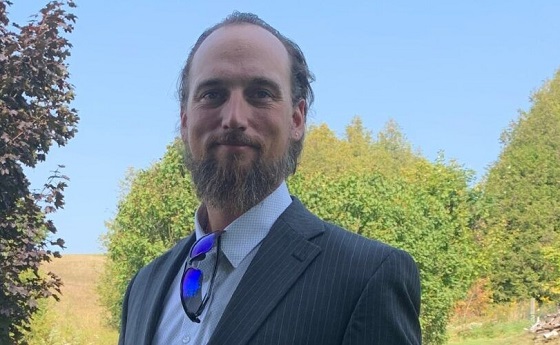COVID-19
Liberals determined to reject rule of law after Emergencies Act ruling: Aaron Wudrick

From the MacDonald Laurier Institute
The government comforts itself in the fiction that the rules don’t apply to it
On Tuesday, The Federal Court of Canada released a decision that all Canadians should celebrate as an important victory for the rule of law in Canada.
In an application brought by two public interest law associations — the Canadian Constitution Foundation and the Canadian Civil Liberties Association — the court considered two questions. Whether the Trudeau government acted outside the law in invoking the Emergencies Act in February 2022 to put an end to the Freedom Convoy protests in Ottawa, and whether orders issued under the authority of the act violated the Charter. On both counts, the court answered unambiguously: yes, they did.
Perhaps the most striking thing about the court decision authored by Justice Richard Mosley is how straightforward much of the reasoning is. There is no tortured logic, no obscure line of argument, no abstract reasoning; the principles at stake are easily digestible by lawyers and non-lawyers alike. Justice Mosley does exactly what most Canadians probably expect courts to do: consider evidence; read what the law says; and draw conclusions that, for lack of a better phrase, reflect common sense.
Take for example the government’s insistence that the Freedom Convoy constituted a “threat to the security of Canada” — a phrase which is explicitly defined in the Emergencies Act as having the same meaning as it does in Section 2 of the Canadian Security Intelligence Service (CSIS) Act. Unfortunately for the government, CSIS’s official determination was that the convoy did not constitute a threat to the security of Canada. This being a very inconvenient obstacle for a government that wanted to invoke the act, Cabinet simply came up with a new strategy: ignore the statutory requirement that the Section 2 CSIS Act definition be met, come up with an alternative definition that better fits their argument, and make the opposite finding! QED.
Understandably, Justice Mosley had none of this. The law says what the law says. Perhaps, as has been argued elsewhere, using the CSIS Act definition of “threat to the security of Canada” is a poor fit for the Emergencies Act. If so, Parliament is well within its rights to amend it. But it’s not what the law said in February 2022, and Cabinet cannot simply wave away the words because it happens to be inconvenient for their best-laid plans.
On issue after issue — the scope of the security threat; the claim that enforcement tools under existing laws being exhausted; the reasonableness of sweeping violations of Charter rights of free expression and against unreasonable search and seizure — Justice Mosley, after looking at all the evidence, disagreed with the government’s assertions. The government’s claims simply did not survive contact with a fulsome evidentiary record.
Nor was the ruling only damning to the government’s flimsy arguments. It was also an implicit rebuke to Justice Paul Rouleau, the head of the Public Order Emergency Commission, who made the unnecessary and ill-advised choice in his final report to muse about the legality of the act’s invocation, in spite of the fact that — by his own admission — it was not part of his mandate to do so, and he had not undertaken a formal analysis.
Perhaps most interesting of all was Justice Mosley’s candid admission towards the end of his decision that he had initially “been leaning to the view that the decision to invoke the (Emergencies Act) was reasonable” and acknowledged that it was only after taking the time to “carefully deliberate about the evidence and submissions” and the applicants’ “informed legal argument” did he conclude — unambiguously — that the government had acted outside the law.
And what of the political fallout? There is a world in which a government might, when confronted with a court ruling that they illegally invoked and abused the most draconian law on the books, simply accept the ruling with humility, apologize unreservedly for having overstepped, and resign on principle.
Clearly, we don’t live in that world: unrepentant as ever, and within an hour of the decision’s release, Deputy Prime Minister Chrystia Freeland announced that the government would be appealing it. This is completely in character for a government that has time and again sneered at the rule of law — e.g. their ethics violations both big and small, the SNC-Lavalin scandal — preferring to comfort itself with fiction that rules are for other people.
Canadians know better. Governments are obliged to follow the law, just like everyone else — and we owe Justice Mosley a debt of gratitude for the timely reminder of that fact.
Aaron Wudrick is a lawyer and the domestic policy director at the Macdonald-Laurier Institute.
COVID-19
Judge denies Canadian gov’t request to take away Freedom Convoy leader’s truck

From LifeSiteNews
A judge ruled that the Ontario Court of Justice is already ‘satisfied’ with Chris Barber’s sentence and taking away his very livelihood would be ‘disproportionate.’
A Canadian judge has dismissed a demand from Canadian government lawyers to seize Freedom Convoy leader Chris Barber’s “Big Red” semi-truck.
On Friday, Ontario Court of Justice Judge Heather Perkins-McVey denied the Crown’s application seeking to forfeit Barber’s truck.
She ruled that the court is already “satisfied” with Barber’s sentence and taking away his very livelihood would be “disproportionate.”
“This truck is my livelihood,” said Barber in a press release sent to LifeSiteNews.
“Trying to permanently seize it for peacefully protesting was wrong, and I’m relieved the court refused to allow that to happen,” he added.
Criminal defense lawyer Marwa Racha Younes was welcoming of the ruling as well, stating, “We find it was the right decision in the circumstances and are happy with the outcome.”
John Carpay, president of the Justice Centre for Constitutional Freedoms (JCCF), said the decision is “good news for all Canadians who cherish their Charter freedom to assemble peacefully.”
READ: Freedom Convoy protester appeals after judge dismissed challenge to frozen bank accounts
“Asset forfeiture is an extraordinary power, and it must not be used to punish Canadians for participating in peaceful protest,” he added in the press release.
As reported recently by LifeSiteNews, the Canadian government claimed that Barber’s truck is an “offence-related property” relating to his involvement in the 2022 protests against Canada’s COVID mandates.
At this time, the court ruling ends any forfeiture proceedings for the time being, however Barber will continue to try and appeal his criminal conviction and house arrest sentence.
Barber’s truck, a 2004 Kenworth long-haul he uses for business, was a focal point in the 2022 protests. He drove it to Ottawa, where it was parked for an extended period of time, but he complied when officials asked him to move it.
On October 7, 2025, after a long trial, Ontario Court Justice Perkins-McVey sentenced Barber and Tamara Lich, the other Freedom Convoy leader, to 18 months’ house arrest. They had been declared guilty of mischief for their roles as leaders of the 2022 protest against COVID mandates, and as social media influencers.
Lich and Barber have filed appeals of their own against their house arrest sentences, arguing that the trial judge did not correctly apply the law on their mischief charges.
Government lawyers for the Crown have filed an appeal of the acquittals of Lich and Barber on intimidation charges.
The pair’s convictions came after a nearly two-year trial despite the nonviolent nature of the popular movement.
COVID-19
Freedom Convoy protester appeals after judge dismissed challenge to frozen bank accounts

From LifeSiteNews
Protestor Evan Blackman’s legal team argues Trudeau’s Emergencies Act-based bank account freezes were punitive state action tied directly to protest participation.
A Freedom Convoy protester whose bank accounts were frozen by the Canadian government says a judge erred after his ruling did not consider the fact that the funds were frozen under the Emergencies Act, as grounds for a stay of proceedings.
In a press release sent out earlier this week, the Justice Centre for Constitutional Freedoms (JCCF) said that Freedom Convoy protestor Evan Blackman will challenge a court ruling in his criminal case via an appeal with the Ontario Superior Court of Justice.
“This case raises serious questions about how peaceful protest is treated in Canada and about the lasting consequences of the federal government’s unlawful use of the Emergencies Act,” noted constitutional lawyer Chris Fleury. “The freezing of protestors’ bank accounts was part of a coordinated effort to suppress dissent, and courts ought to be willing to scrutinize that conduct.”
Blackman was arrested on February 18, 2022, during the police crackdown on Freedom Convoy protests against COVID restrictions, which was authorized by the Emergencies Act (EA). The EA was put in place by former Prime Minister Justin Trudeau’s Liberal government, which claimed the protests were violent, despite no evidence that this was the case.
Blackman’s three bank accounts with TD Bank were frozen due to his participation in the Freedom Convoy, following a directive ordered by Trudeau.
As reported by LifeSiteNews, in November of this year, Blackman was convicted at his retrial even though he had been acquitted at his original trial. In 2023, Blackman’s “mischief” and “obstructing police” charges were dismissed by a judge due to lack of evidence and the “poor memory of a cop regarding key details of the alleged criminal offences.”
His retrial resulted in Blackman getting a conditional discharge along with 12 months’ probation and 122 hours of community service, along with a $200 victim fine surcharge.
After this, Blackman’s application for a stay of proceedings was dismissed by the court. He had hoped to have his stay of proceedings, under section 24(1) of the Charter of Rights and Freedoms, allowed. However, the judge ruled that the freezing of his bank accounts was legally not related to his arrest, and because of this, the stay of proceedings lacked standing.
The JCCF disagreed with this ruling, noting, it “stands in contrast to a Federal Court decision finding that the government’s invocation of the Emergencies Act was unreasonable and violated Canadians’ Charter rights, including those targeted by the financial measures used against Freedom Convoy protestors.”
As of press time, a hearing date has not been scheduled.
In 2024, Federal Court Justice Richard Mosley ruled that Trudeau was “not justified” in invoking the Emergencies Act.
In early 2022, the Freedom Convoy saw thousands of Canadians from coast to coast come to Ottawa to demand an end to COVID mandates in all forms. Despite the peaceful nature of the protest, Trudeau’s federal government enacted the EA in mid-February.
After the protesters were cleared out, which was achieved through the freezing of bank accounts of those involved without a court order as well as the physical removal and arrest of demonstrators, Trudeau revoked the EA on February 23, 2022.
-

 Agriculture2 days ago
Agriculture2 days agoWhy is Canada paying for dairy ‘losses’ during a boom?
-

 Alberta2 days ago
Alberta2 days agoAlberta’s new diagnostic policy appears to meet standard for Canada Health Act compliance
-

 Bruce Dowbiggin1 day ago
Bruce Dowbiggin1 day agoHunting Poilievre Covers For Upcoming Demographic Collapse After Boomers
-

 Business1 day ago
Business1 day agoState of the Canadian Economy: Number of publicly listed companies in Canada down 32.7% since 2010
-

 Censorship Industrial Complex1 day ago
Censorship Industrial Complex1 day agoCanadian university censors free speech advocate who spoke out against Indigenous ‘mass grave’ hoax
-

 Alberta1 day ago
Alberta1 day agoHousing in Calgary and Edmonton remains expensive but more affordable than other cities
-

 Censorship Industrial Complex2 days ago
Censorship Industrial Complex2 days agoTop constitutional lawyer warns against Liberal bills that could turn Canada into ‘police state’
-

 Digital ID2 days ago
Digital ID2 days agoCanadian government launches trial version of digital ID for certain licenses, permits






